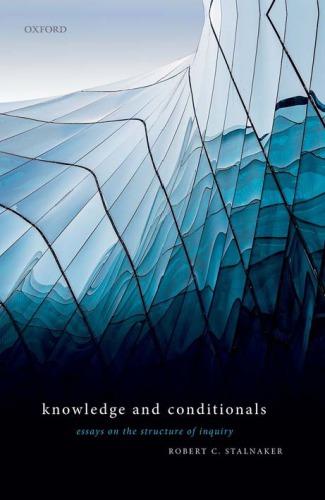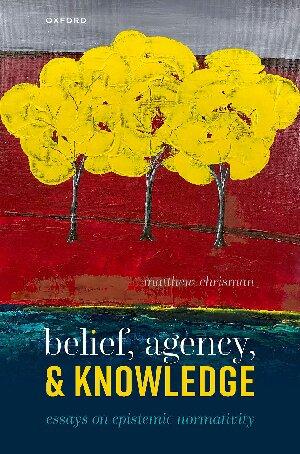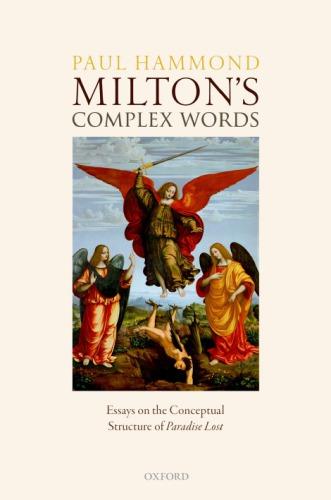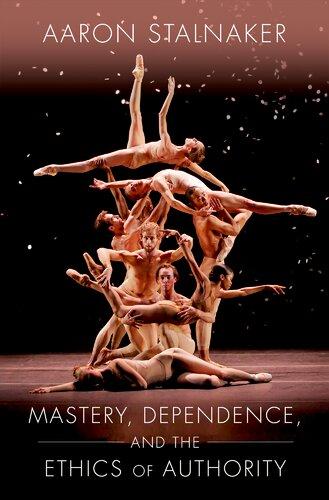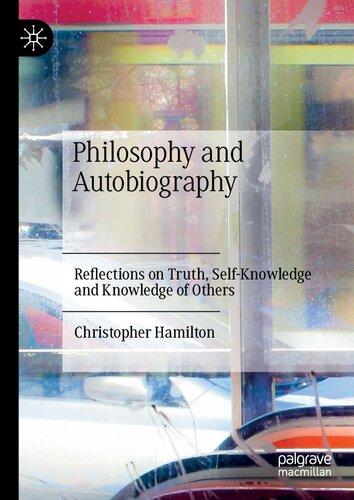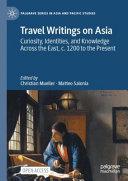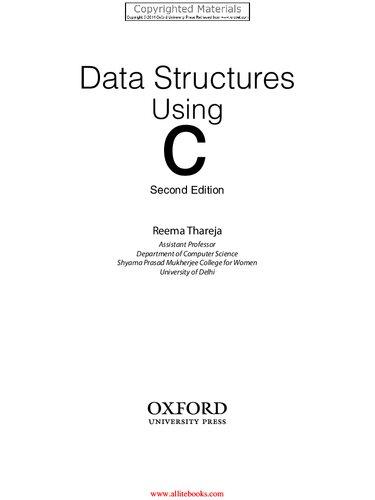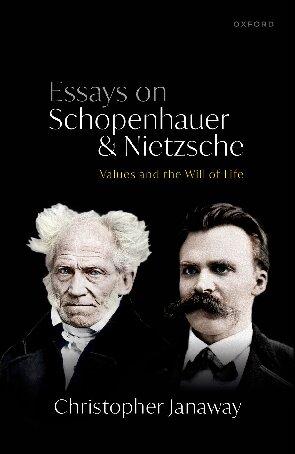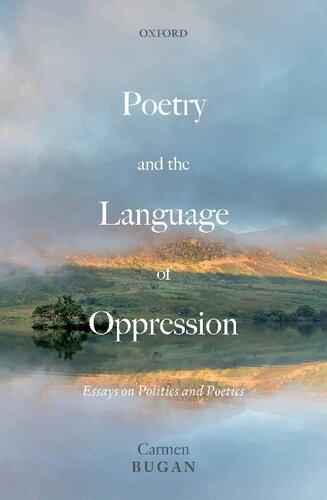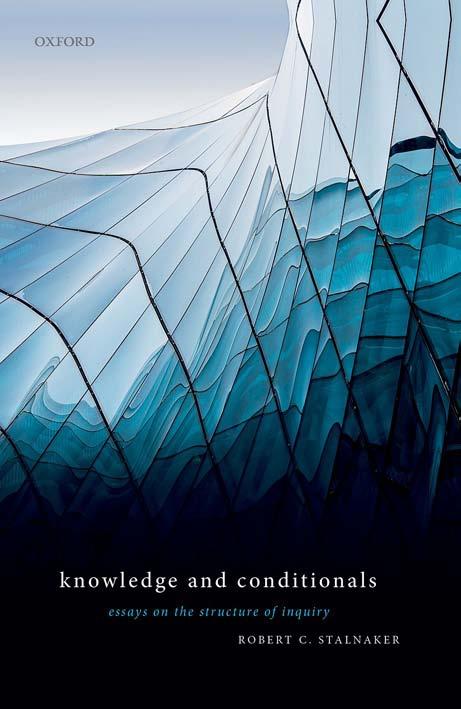Visit to download the full and correct content document: https://ebookmass.com/product/knowledge-and-conditionals-essays-on-the-structureof-inquiry-robert-c-stalnaker/
More products digital (pdf, epub, mobi) instant download maybe you interests ...
Belief, Agency, and Knowledge: Essays on Epistemic
Normativity Matthew Chrisman
https://ebookmass.com/product/belief-agency-and-knowledge-essayson-epistemic-normativity-matthew-chrisman/
Milton's complex words: essays on the conceptual structure of Paradise Lost First Edition John Milton
https://ebookmass.com/product/miltons-complex-words-essays-onthe-conceptual-structure-of-paradise-lost-first-edition-johnmilton/
Mastery, Dependence, and the Ethics of Authority Aaron Stalnaker
https://ebookmass.com/product/mastery-dependence-and-the-ethicsof-authority-aaron-stalnaker/
Reality And Its Structure: Essays In Fundamentality
Ricki Bliss
https://ebookmass.com/product/reality-and-its-structure-essaysin-fundamentality-ricki-bliss/
Philosophy and Autobiography: Reflections on Truth, Self-Knowledge and Knowledge of Others Christopher Hamilton
https://ebookmass.com/product/philosophy-and-autobiographyreflections-on-truth-self-knowledge-and-knowledge-of-otherschristopher-hamilton/
Travel Writings on Asia: Curiosity, Identities, and Knowledge Across the East, c. 1200 to the Present Christian Mueller
https://ebookmass.com/product/travel-writings-on-asia-curiosityidentities-and-knowledge-across-the-east-c-1200-to-the-presentchristian-mueller/
Data structure using C Reema Thareja
https://ebookmass.com/product/data-structure-using-c-reemathareja/
Essays on Schopenhauer and Nietzsche: Values and the Will of Life Christopher Janaway
https://ebookmass.com/product/essays-on-schopenhauer-andnietzsche-values-and-the-will-of-life-christopher-janaway/
Poetry and the Language of Oppression: Essays on Politics and Poetics Carmen Bugan
https://ebookmass.com/product/poetry-and-the-language-ofoppression-essays-on-politics-and-poetics-carmen-bugan/
KnowledgeandConditionals Knowledgeand Conditionals EssaysontheStructureofInquiry RobertC.Stalnaker
GreatClarendonStreet,Oxford,OX26DP, UnitedKingdom
OxfordUniversityPressisadepartmentoftheUniversityofOxford. ItfurtherstheUniversity’sobjectiveofexcellenceinresearch,scholarship, andeducationbypublishingworldwide.Oxfordisaregisteredtrademarkof OxfordUniversityPressintheUKandincertainothercountries
©RobertC.Stalnaker2019
Themoralrightsoftheauthorhavebeenasserted
FirstEditionpublishedin2019
Impression:1
Allrightsreserved.Nopartofthispublicationmaybereproduced,storedin aretrievalsystem,ortransmitted,inanyformorbyanymeans,withoutthe priorpermissioninwritingofOxfordUniversityPress,orasexpresslypermitted bylaw,bylicenceorundertermsagreedwiththeappropriatereprographics rightsorganization.Enquiriesconcerningreproductionoutsidethescopeofthe aboveshouldbesenttotheRightsDepartment,OxfordUniversityPress,atthe addressabove
Youmustnotcirculatethisworkinanyotherform andyoumustimposethissameconditiononanyacquirer
PublishedintheUnitedStatesofAmericabyOxfordUniversityPress 198MadisonAvenue,NewYork,NY10016,UnitedStatesofAmerica
BritishLibraryCataloguinginPublicationData
Dataavailable
LibraryofCongressControlNumber:2019933997
ISBN978–0–19–881034–6
Printedandboundby CPIGroup(UK)Ltd,Croydon,CR04YY
LinkstothirdpartywebsitesareprovidedbyOxfordingoodfaithand forinformationonly.Oxforddisclaimsanyresponsibilityforthematerials containedinanythirdpartywebsitereferencedinthiswork.
Acknowledgments Nineofthepaperscollectedherehavebeenpreviouslypublished,orintwocases,are forthcominginotherpublications.Ithanktheeditorsandpublishersforpermission toreprintthemhere.Thedetailsaboutthesourcesarelistedonpageiv.
Ihavetoomanyintellectualdebtstoacknowledgethemallatthispoint,butletme mentionsomeofthepeoplethathaveaffectedmythinkingonalltheissuesIdiscuss inthechaptersofthisbook.
ManyoftheideasinthesepapersweredevelopedinseminarsIgaveatMITandat ColumbiaUniversityonconditionalsandontopicsinepistemologyoverthepast five orsixyears.Iwasfortunatetohavegroupsofverytalentedphilosophersparticipatinginthoseseminarswhosecriticalandconstructivecontributionstothediscussion helpedmetounderstandtheissues,andinfluencedmyresponsestothem.These includedJessicaCollins,NilanjanDas,KevinDorst,JeremyGoodman,DanGreco, BrianHedden,DanHoek,SophieHorowitz,JensKipper,HarveyLederman,Matt Mandelkern,DamienRochford,BernhardSalow,MiriamShoen field,Jonathan Vogel,andIanWells.
EpistemologyhasbeenalivelyareaofresearchatMIT,andoverawiderrange oftimeIhavebene fitedfromthealmostconstant flowofstimulatingdiscussion, informalandinreadinggroupsaswellasseminars,withgraduatestudentsand colleagues.Inadditiontothosealreadymentioned,Iwanttothankthefollowingwho havehelpedmetounderstandtheseissues,bothduringtheirtimeatMITandlater: RayBriggs,AlexByrne,AndyEgan,AdamElga,NedHall,CasparHare,JustinKhoo, SarahMoss,MiloPhilips-Brown,AgustinRayo,GingerSchultheis,JackSpencer, JasonStanley,EricSwanson,ZoltanSzabo,RogerWhite,SteveYablo,andSeth Yalcin.
MydebtstoTimothyWilliamson,DorothyEdgington,andDavidLewiswillbe evidentthroughoutthesepapers.Witheach,thereistherightmixofagreementand disagreementtomakeforfruitfuldiscussion.Eachhashadaprofoundinfluenceon myideas.
Thanks,asalways,toPeterMomtchiloffforhissupportandadvice,andtoDavid Balcarrasforeditorialhelp.
DetailsofFirstPublication Ithanktheeditorsandpublishersforpermissiontoreprintthefollowingpreviously publishedpapersinthiscollection.
Chapter1isreprintedbypermissionfromSpringerNature, PhilosophicalStudies, Volume120,Issue1,RobertStalnaker, “OnLogicsofKnowledgeandBelief,” 169–99. Copyright©2006.
Chapter2 firstappearedasRobertStalnaker, “LuminosityandtheKKThesis” in Externalism,Self-knowledgeandSkepticism,editedbySanfordC.Goldberg, 17–40,CambridgeUniversityPress.Copyright©2015.Reprintedbypermissionof CambridgeUniversityPress.
Chapter3isreprintedbypermissionfromSpringerNature, Erkenntnis,Volume 70,Issue2,RobertStalnaker, “IteratedBeliefRevision, ” 189–209.Copyright©2008.
Chapter4 firstappearedasRobertC.Stalnaker, “ModelingaPerspectiveonthe World” in AboutOneself:DeSeThoughtandCommunication,editedbyManuel García-CarpinteroandStephanTorre,121–37.Copyright©2016.Reprintedby permissionofOxfordUniversityPress:https://global.oup.com/academic/product/ about-oneself-9780198713265.
Chapter7alsoappearsasRobertC.Stalnaker, “ExpressivismandPropositions,” forthcomingin UnstructuredContent,editedbyDirkKindermann,AndyEgan,and PetervanElswyk,andisreprintedbypermissionofOxfordUniversityPress.
Chapter9isreproducedwithpermissionfromRobertStalnaker, “ATheoryof Conditionals,” in StudiesinLogicalTheory,editedbyNicholasRescher,98–112,Basil Blackwell.Copyright©1968.
Chapter10 firstappearedasRobertC.Stalnaker, “ConditionalPropositions andConditionalAssertions,” in EpistemicModality editedbyBrianWeatherson andAndyEgan,227–48.Copyright©2011,andisreprintedbypermission ofOxfordUniversityPress:https://global.oup.com/academic/product/epistemicmodality-9780199591589.
Chapter11alsoappearsasRobertC.Stalnaker, “CounterfactualsandProbability,” forthcomingin Conditionals,ParadoxandProbability:ThemesfromthePhilosophy ofDorothyEdgington,editedbyLeeWaltersandJohnHawthorne,andisreprinted bypermissionofOxfordUniversityPress.
Chapter12 firstappearedasRobertStalnaker, “CounterfactualsandHumean Reduction, ” in ACompaniontoDavidLewis,editedbyBarryLoewerandJonathan Schaffer,411–24,Wiley-Blackwell.Copyright©2015.Reprintedbypermissionof theeditors.
Thefollowingchaptersarepublishedhereforthe firsttime:
“Reflection,Endorsement,Calibration ”
“RationalReflectionandtheNotoriousUnmarkedClock”
“ContextualismandtheLogicofKnowledge” “DispositionsandChance.”
Introduction MorethanthirtyyearsagoIwroteabookcalled Inquiry.Thiswasagreattitlefora philosophybook,withitsallusion(orhomage)toclassicworksintheempiricist tradition,anditwasanappropriatetitlefortheaspirationswithwhichthebookwas written:itstopic,Isaidinthepreface,wastheabstractstructureofinquiry.Butitis lessclearthatthiswasanappropriatetitleforwhatwasactuallyaccomplishedinthe booksinceitdidnotgetmuchbeyondpreliminarysettingupoftheissues,andsome expositionofandmotivationfortheformalapparatusthatIplannedtousetotalk aboutthestructureofinquiry.Beforegettingtothemainissues,Ihadtoexplainand motivatemyapproachtotheproblemofintentionality,sketchandmotivatethe formalapparatususedtorepresentthatapproach(possibleworldssemantics),and respondtoproblemsthattheapproachfaced.Thattookupmostofthebook.The restofitfocusedmainlyonanotherpieceofapparatusneededtorepresentthe dynamicsofbelief(aformalsemanticsforconditionals),andIwasabletomakeonly astartonadiscussionoftheroleofthisapparatusinformingandrefiningbothrules forrevisingbeliefs,andconceptsforgivingatheoreticaldescriptionoftheworld.
Isaidatthetime(againinthepreface)thatIhadbegunthatprojectwithanaïve hopethatIcouldgettothebottomoftheproblemsIwasconcernedwith,butthat IhadlearnedthatthebottomwasfurtherdownthanIthoughtandsowasthen preparedonlytomakeapreliminaryprogressreport.Thepresentcollectionisa furtherprogressreportonthesameproject,butIhavechangedmymindabout gettingtothebottomofthings.I’vedecidedthereisnobottom:thebestwecandoin philosophyistochipawayatbitsandpiecesoftheproblems.Wecanpaint impressionisticbigpicturesthatwehopewillgetonetoseetheissuesinanewand betterway,andwecanconstructmodelsthatachieveprecisiononlyatthecostof idealizationandsimpli fication,butthatwehopewillthrowsomelightonthe phenomena.Thatmaybeenoughtocountasprogress.
Onegainssomeperspectivefromputtingacollectiontogether,seeingconnections andrecurrentthemesthatonehadnotnoticedwhenworkingontheindividual papers.OnethingthatstoodoutformeasIselectedpapersforthiscollection,and addedtothemto fillingaps,wasthecontinuitywiththeearlierbook,eventhoughall butoneofthepapersinthiscollectionwerewrittenmorethanthirtyyearsafter Inquiry waspublished.Thiscollectionalsohastwoparts,papersonknowledgeand papersonconditionals,andthesepapersdiscussthesamethemesdiscussedinthe twopartsoftheearlierbook.Thefocusofthe firstparthaschangedfrombeliefto knowledge,butIhavecometoseethattheproblemofintentionality(atleastonmy wayofapproachingit)isessentiallythesameastheproblemofcharacterizing knowledge.Knowledgewhether ϕ,accordingtoasloganIlike,isthecapacityto
makeone’sactionsdependonwhether ϕ.Knowledgeisamatterofcausalsensitivity tofactsthatarethesubjectmatterofone’sknowledge.Myearliergesturesat explainingintentionalitytookasimilarform:Itookbeliefanddesiretobethe basicintentionalstates,butarguedthatbeliefstatesgettheirintentionalcontent fromtheinformationthattheytendtobesensitiveto(undercertainnormal conditions).LookingbackfromthelaterperspectiveofTimothyWilliamson ’ s generalpictureofepistemology,Icametoappreciatethatmyaccountofintentionalityisreallyaversionofhis “knowledge first” view:beliefiswhatwouldbe knowledgeiftherelevantnormalconditionsinfactobtained,ortoputittheother wayaround,knowledgeisfullbeliefwhenitisnon-defective.
Thepapersinthesecondhalfofthiscollectiondevelopfurthertheideasabout conditionalsthataresketchedinthelastthreechaptersof Inquiry:theirrolein epistemology,themetaphysicalstatusofthepropositionstheyexpress,andtheir relationtoprobabilisticconcepts,bothcredenceandchance.Intheearlierbook IsketchedanddefendedwhatIcalledtheprojectionstrategyforexplainingobjective modalconceptsasakindofprojectionofepistemicstatesandpoliciesontothe world,arguingthatthisstrategyhelpedtoexplaintherelationbetweenthetwokinds ofconditionals(indicativeandsubjunctive).ThestrategyhasitsrootsinHume,but IcontrasteditwiththekindofreductionistHumeanprojectthatDavidLewis developed.Onmyanti-reductionistaccount,theresultoftheprojectionisconcept formationthatrefinesourdescriptiveresourcesfordistinguishingbetweenthe possiblewaysthattheworldmightbe.Inthepapersinthesecondpartofthis collectionIlookinmoredetailatthesesameissues.
Iwillsketchinbroadstrokesthepictureofepistemologythatisguidingme,and thentrytoputtheindividualpapersincontextbysayinghowIseetheirrelationto thisbigpicture.
Themainproblemofepistemologyistoexplainhowwecognitivebeingsareable to findourwayaboutintheworld:howdoweacquireandusetheinformationabout ourenvironmentthatweneedtosucceedinit?Eventhesimplestanimalsacquire anduseinformation,andthey(alongwithsimpleartifacts)provideusefulmodelsof knowledge,butonethingthatdistinguishesthekindofcognitivebeingswearefrom thesesimplecasesisthatwecanreflectonourselvesascognitivebeings;partofthe informationweareabletoacquireanduseisinformationaboutourownplacein theworld informationabouthowweareabletoacquireanduseinformation.The pointisnotjustthatoneoftheinquirieswecanengageinisepistemology.Itisthat anyinquirywillinvolveatleastimplicitconsiderationofthemethodsweareusingto reachtheconclusionswereach,andwhenwearesurprised whensomethingwe tookourselvestoknowisshowntobefalse weareforcedtoreflectonwhatwent wrong:whatassumptionweweremaking,perhapsimplicitly,aboutourepistemic connectionstotheworld,andwhatchangesweneedtomakeinthoseassumptionsto recoverfromourmistakes.Theupshotisthatoneoftheimportantchannelsof informationinvolvedinouracquisitionandrevisionofknowledgeisinformation aboutourselvesandourplaceintheworld.
Aseconddistinctivefeatureofthekindofcomplexcognitivebeingsthatweareis thatwearesocialcreatureswhorelyontheknowledgeofothers.Thatis,knowers otherthanourselvesareinvolvedinthechannelsthroughwhichwereceive
information.Criticalreflectiononthesechannelsofinformationwillbereflection, fromathirdpersonperspective,onhowitisthatcognitivebeingslikeourselvesare ableto findtheirwayaround,what their sourcesofinformationare,andwhatthe worldislikefromtheirperspectives.
So,wedevelopaconceptionoftheworldaprominentpartofwhichisourselves andotherslikeus rationalagentswhoaredevelopingandrefiningaconceptionof theworldtheyarein.Clarifyingaconceptionofthiskindwillinvolveconsidering differentperspectivesontheworld,andrelationsbetweenthoseperspectives.Ina sense,wearelookingatourselvesfromtheoutside,asagentswhoseinteractionswith natureandwithotheragentsarepartofanobjectiveworldtobedescribedand explained.Butwealsorecognizethatwearen’treallyoutside:Ourthird-personview ofourselvesisdevelopedandrefinedwithintheworld,fromperspectiveswithinit. Gettingclearabouttherelationshipsbetweendifferentcognitiveperspectives that ofthetheorist,thatofoneselfatthemoment,thatofoneselfatrememberedand anticipatedtimes,andthatofothers isoneoftheaimsinmanyofthepapersinthis collection.
Thepictureisanaturalisticonethatseescognitivebeingsaspartofthenatural world.TakingapagefromHume,thisnaturalisticpicturegivesnoroletopure reason,beyondtherequirementsofconsistencyandcoherence,initsaccountof inductiveknowledge.ItaketheupshotofHume’sskepticalargumentthatreason cannotjustifyinductivepractice,andhisjudgmentthatallreasoningaboutmatters offactisbasedoncauseandeffecttobesomethinglikethis:wecan’tseparatethe taskofdevelopingandjustifyingrulesfor findingoutabouttheworldfromthe substantivetaskofdevelopingaviewaboutwhattheworldislike.Weapproachboth tasksfromwithin,criticizingandrefiningthemethodsandbeliefsthatwe find ourselveswith.
Todevelopandsharpenthispicture,ithelpstohavesomeformaltools.Thebook begins,inchapter1,withareviewofaformalsemantics,inthepossible-worlds framework,ofknowledgeandbelief.Afeatureofthiswayofmodelingknowledge (pioneeredbyJaakkoHintikka)isthatitprovidesawayofrepresentingpropositions aboutwhatanagentknowsaspropositionsthatarethemselvesthecontentsof knowledge.Intheearlytheoriesofthiskind,justasingleknowerwasmodeled,but theframeworknaturallyextendstoatheorywithmultipleknowerswhohave knowledgeandbeliefsabouttheknowledgeandbeliefsofeachother,sothisisan appropriateframeworkfordevelopingthegeneralpicturesketchedabove.Inthe particularversionofamodeltheoryforknowledgeandbeliefthatIsketchinthis chapter,assumptionsaremadethatpermitbelieftobereducedknowledge,whichis appropriatetothe “knowledge first” ideologythatisimplicitintheinformationtheoreticpictureofknowledge.Anditprovidesaframeworkforclarifyingquestions aboutfurtherconstraintsontherelationbetweenknowledgeand(full)belief(where yourfullbeliefsare,roughly,thepropositionsyourightlyorwronglytakeyourselfto know).Belief,inthissense,andknowledgewillcoincidewhenoneisrightabout everything,butwecanconsiderhowmuchwecangeneralizeaboutwhatanagent knowswhensomeofwhatshetakesherselftoknowisfalse.Thatis,whatcanone say,atthislevelofabstraction,abouttheextenttowhicherrorsinsomeofour knowledgeclaimsinfectothersofourknowledgeclaims,andtheextenttowhich
someoftheseknowledgeclaimscanbeisolatedfromothers.Iposethisquestionin themodeltheoreticframework,anddrawsomeconnectionsbetweenanswerstoit andproposalsthataroseintheverydifferentpost-Gettierprojectoftryingtoanalyze knowledgeintermsoftruebelief,plussomefurthercondition.
Thelogicofknowledgesketchedinthe firstchaptermakessometransparencyor luminosityassumptionsthatarecontroversial.While,asIhavesuggested,mypicture conformsinmanywayswithWilliamson’sexternalistepistemology,itdiverges sharplyfromhisontheissueofluminosity.ButIargueinthesecondchapter,with thehelpofsomesimplemodelsofinformation-carryingdevices,thatthese assumptions particularlytheassumptionthatonewhoknowsthat ϕ isinaposition toknowthatsheknowsit canbereconciledwithathoroughlyexternalistconceptionofknowledge.
Asecondpieceofformalapparatusthatisrelevanttothedynamicdimensionof thepictureisaformaltheoryofbeliefrevision.Themaintaskofthestandardbelief revisiontheoryistospecifyconstraintsonthewayasubjectisdisposedtochangehis overallbeliefstateasaresultofdiscoveringthatsomepriorfullbeliefisfalse.The thirdchapterisacriticaldiscussionofsomeattemptstoextendthestandardtheory togiveanaccountofthewayone’sbeliefrevisionpolicies,aswellasone’sbeliefs, shouldchangeinresponsetothediscoverythatapriorbeliefisfalse.Someelegant theoriesofiteratedbeliefrevisionhavebeenproposed,andtheyhelptoclarifythe terrain,butIarguethattheyallfacecounterexamples.Althoughthemainpoints Imakeinthischapterarenegative,thecounterexamplespointtotheimportanceof meta-information theagent’sknowledgeandbeliefsaboutherownepistemic situation inbeliefrevision.Afullysatisfactorybeliefrevisionwillinvolvean explanationofwhyrevisionwasrequired ofwhatdeviationfromnormalcondition ledonetotakeoneselftoknowsomethingthatonedidnotknow butoftenone learnsonewasmistakenwithoutlearningwhy,andthiscomplicatestheprocessof rationalbeliefrevision.
Thefourthchapterisaboutthewayself-locatingknowledgeandbeliefshouldbe represented.OnthepictureofcognitivebeingsthatIamworkingwith,allknowledge is,inasense,self-locatingsinceallofanagent’srepresentationsgettheircontent fromthatagent’srelationtothethingsthoserepresentationsareabout.Iarguethat thestandardwayofthinkingaboutself-locatingbelief,whichdistinguishessharply betweenknowingwhatpossibleworldyouareinandknowingwhereyouareinthe world,isconfused.Youcanknowwhatcountryyouareinwithoutknowingwhere youareinthecountry,but(Iargue)ignoranceofwhereyouare,orwhattimeitis,is alwaysignoranceaboutwhattheworldislike,whichistosay,aboutwhatpossible worldyouarein.Modelsthatrecognizethiscanhelpgiveaclearerviewofthewaywe thinkabouttherelationsbetweenepistemicperspectives,sincechartingthoserelationsrequirescalibratingtherelationsbetweenthecontentsoftheattitudesof differentagents,andofthesameagentatdifferenttimes.
Fullbelief,onthepictureIamdeveloping,iswhatonetakesoneselftoknow,buta cognitivestatewillalsoincludedegreesofpartialbelief,anda “knowledge first” epistemologymustconcernitselfwiththesemore fine-grainedstatesaswell.Questionsabouttherelationshipsbetweendifferentcognitiveperspectiveswillinclude questionsabouttherelationshipsbetweenthecredencefunctionsofdifferentagents,
andofthesameagentatdifferenttimes.Chapters5and6areaboutreflectionor deferenceprinciples:principlesthatstateconstraintsonanagent’scredencesabouta credencefunctionotherthanherownatthattime:aboutherownanticipatedor rememberedcredences,aboutthecredencesofanotheragent,oraboutthecredences thatsheideallyoughttohave.Iargueinchapter5thatreflectionprinciplesabout oneselfatothertimesoraboutotherscanbedefendedontheconditionthatone endorses thoseothercredencefunctions,whichmeansthatonejudgesthattheyare therightcredencesfortherelevantagenttohave.Inchapter6,Iexploreapuzzle abouttheattitudesthatanagentshouldhaveabouttherationalityofherownpresent attitudes.
Theconceptionthatourcognitiveagentisformingandrefininghasanormative dimension.Herinquiriesaskwhattheworldislike,whileatthesametimeasking whatrulesandproceduressheshouldadopttoformbeliefsandpartialbeliefsabout whattheworldislike.Chapter7focusesonthenormativeorpracticaldimension.It sketchesaframework,developedbyAllanGibbard,forrepresentingamixof normativeandfactualbeliefs.WhileIendorseGibbard’sexpressivistframework, Irejecthisowninterpretationofthatframework,arguingthatitblurstheline betweenarealistandanexpressivistconceptionofnorms.Thischapterismostly aboutnormsingeneral,butinthelastpartIlookatsomewaysinwhichthis frameworkhelpstoclarifymorespecificquestionsaboutepistemicnorms,andthe waystheirapplicationisconstrainedbyfacts.
Theinformation-theoreticconceptionofknowledgeisnecessarilyacontextualist conceptionforthefollowingreason:Knowledgeclaimscanbemadeonlyagainsta backgroundoffactualpresuppositionssince,onthatconception,knowledgeisbased onnaturalisticcausalrelationsbetweenaknowerandtheenvironmentthatisknown. Butthepresuppositionsrelativetowhichknowledgeisdefinedcanthemselvesalways bequestioned,andaddressingthosequestionsrequiresashiftinthecontext. Chapter8developstheinformation-theoreticversionofcontextualismaboutknowledge,comparingandcontrastingitwithacontextualisttheorydevelopedbyDavid Lewisthathasaverydifferentmotivation.
Thesecondpartofthebookcontainspapersthatfocusonconditionalpropositions:theirroleinrepresentingepistemicpolicies,theircontributiontothetheoreticalresourcesfordescribingtheworld,andtheirconnectionswithotherobjective modalnotionssuchasdispositionalpropertiesandchance.
Asnotedabove,allbutoneofthepaperswerewritteninthelasttenortwelve years.Theexceptionischapter9,my firstpaperonconditionals,whichisnowabout fiftyyearsold.Itisincludedheresinceitisthestartingpointofaprojectthatledtoa progressreportsixteenyearslater,andtoanotheronenow.Theformallogicand semanticsforconditionalsdevelopedinthispaperweresimilartothoseinatheory beingdevelopedindependentlyataboutthesametimebyDavidLewis,butthe philosophicalideasguidingourtwotheorieswereverydifferent.Myprojectwasless ambitiousthanLewis’s,disclaiminganyattempttoprovideareductiveanalysis.The aimwasjusttoclarifytheformalstructureofaconceptandtoprovidethesemantic apparatuswithsomeintuitivemotivation.Thetheory’saimwastodoforcounterfactualconditionalswhatKripke’spossibleworldssemanticsdidfortheconceptsof necessityandpossibility,whichwasmanifestlynotareductionofmodalconceptsto
somethingelse.Theprojectionstrategywasnotexplicitinthisearlypaper,butitwas prefiguredintheappealtoRamsey’sexplanationofindicativeconditionalsto motivateananalysisthathadcounterfactualconditionalsasitsmaintarget.Ramsey’ s suggestionwasabouthowtodecidewhethertoacceptaconditional:addthe antecedent,hypothetically,toyourstockofbeliefs,andaccepttheconditionalif andonlyiftheresultinghypothesizedstockofbeliefsimpliestheconsequent.My question(afterextendingRamsey’ssuggestiontocovercaseswheretheantecedent wasincompatiblewithyourbeliefs)wasthis:Whatshouldthetruth-conditionsfora conditionalpropositionbeifthisisagoodwayofdecidingwhethertoacceptit? Aselectionfunctionfromapossibleworldplusapropositiontoapossibleworldin whichthepropositionistruewasthoughtofasanontologicalanalogueofafunction fromastateofbeliefplusapropositiontoahypotheticalstateofbelief,andsoasa kindofprojectionofarelationbetweencognitivestatesontotheworld.
Whilemyaccountofconditionalspresupposedthattheproblemwastogivetruthconditionsforconditionalpropositions,othersataboutthistimewerearguingthat oneshouldexplainconditionalsentencesassentencesforperformingadistinctive kindofspeechact,orforrepresentingadistinctivekindofconditionalattitude. ErnestAdamsdevelopedaprobabilisticsemanticsthatbeganwiththeideathata conditionalisassertablewhentheprobabilityoftheconsequent,conditionalonthe antecedent,ishigh,andDorothyEdgington,buildingonAdams’swork,developed somepowerfulargumentsforanon-propositionalaccount.Somephilosophers suchasAllanGibbardgaveadividedaccountofconditionals,sidingwithEdgington ingivingaconditionalassertionaccountofindicativeconditionals,butwiththe propositionalistsonsubjunctiveconditionals.BothEdgingtonandIaimedfor unifiedaccountsofthetwokindsofconditionals,butaccountsthatallowedfor andexplainedthedifferences.Inchapters10and11Idefendanecumenical approachtothedisputebetweenpropositionalistsandthosewhowanttoexplain conditionalsintermsofconditionalspeechactsandattitudes,arguinginchapter10 thattheconditionalassertionanalysiscanbeformulatedasalimitingcaseofthe propositionalanalysis,andthatitisusefultodososinceithelpstochartthe connectionsandcontinuitiesbetweenindicativeandsubjunctiveconditionals. Chapter11focusesonEdgington ’saccountofcounterfactuals,andontherelations betweencounterfactualsandobjectiveprobability.Iargueinthischapterthatthe propositionalaccountcanallowforindeterminacy,andcanbetterexplainthe phenomenasheusestodefendheraccountoftheroleofcounterfactualsinepistemic reasoning.
Chapter12developsandcriticizesDavidLewis’sreductiveanalysisofcounterfactuals,andtheHumeansuperveniencemetaphysicsthatunderliesit.Lewis’sHumean theorycontrastswiththeusualempiricistdefenseofaHumeanmetaphysics, whichtakesthesuperveniencebasetobeobservationalorphenomenalconcepts. ForLewis,thepropertiestowhichallelseistobereducedarethefundamental propertiesofphysics.HispicturealsocontrastswiththepictureIhavebeendeveloping,whichputscausalnotionsatthecenterbothofthedescriptiveresourcesfor describingtheworld,andoftherulesforourpracticeoflearningabouttheworld. Lewisseparatesmetaphysicalquestionsconcerningwhatthereisafactofthematter
aboutfromepistemologicalquestionsabouttheproperrulesforlearningaboutthose facts,whileItrytodrawconceptualconnectionsbetweenthetwo.
The finalchapter,aboutdispositionsandchance,isthemostdetaileddiscussionof theprojectionstrategy,andthemostexplicitdevelopmentofanapplicationofit,the applicationtotheconceptofobjectivechance.Iargueintheconclusionofthis chapterthatwhilethegeneralpictureisbasedonconstitutiveconceptualconnections betweenepistemicrulesanddescriptivetheoreticalconcepts(asphenomenalistand verificationisttheorieswere),itisneverthelessathoroughlyrealistmetaphysical picture.
PARTI Knowledge 1 OntheLogicsofKnowledge andBelief 1.Introduction Formalepistemology,oratleasttheapproachtoformalepistemologythatdevelopsa logicandformalsemanticsofknowledgeandbeliefinthepossibleworldsframework, beganwithJaakkoHintikka’sbook KnowledgeandBelief (Hintikka1962).Hintikka’ s projectsparkedsomediscussionofissuesaboutiteratedknowledge(doesknowing implyknowingthatoneknows?)andabout “knowingwho,” andquantifyinginto knowledgeattributions.Muchlater,thiskindoftheorywastakenupandappliedby theoreticalcomputerscientistsandgametheorists.¹Theformalsemanticproject gainednewinterestwhenitwasseenthatitcouldbeappliedtocontextswith multipleknowers,andusedtoclarifytherelationbetweenepistemicandother modalconcepts.
EdmundGettier’sclassicrefutationoftheJustifiedTrueBeliefanalysisofknowledge(Gettier1963)waspublishedataboutthesametimeasHintikka’sbook,andit immediatelyspawnedanepistemologicalindustry aprojectofattemptingtorevise therefutedanalysisbyaddingfurtherconditionstomeetthecounterexamples. Revisedanalysesweremetwithfurthercounterexamples,followedbyfurther re fi nements.Thiskindofproject fl ourishedforsomeyears,buteventually becameaninternallydrivengamethat wasthoughttohavelostcontactwith thefundamentalepistemologicalquestionsthatoriginallymotivatedit.Thisway ofapproachingepistemologicalquesti onsnowseemshopelesslyoutofdate,but Ithinktheremaystillbesomeinsightstobegainedbylookingback,ifnotatthe detailsoftheanalyses,atsomeofthegeneralstrategiesofanalysisthatweredeployed.
Therewaslittlecontactbetweenthesetwoverydifferentepistemologicalprojects. The firsthadlittletosayaboutsubstantivequestionsabouttherelationbetween knowledge,belief,andjustificationorepistemicentitlement,orabouttraditional epistemologicalissues,suchasskepticism.Thesecondprojectignoredquestions abouttheabstractstructureofepistemicanddoxasticstates.ButIthinksomeofthe abstractquestionsaboutthelogicofknowledgeconnectwithtraditionalquestionsin epistemology,andwiththeissuesthatmotivatedtheattemptto findadefinitionof knowledge.Theformalsemanticframeworkprovidestheresourcestoconstruct modelsthatmayhelptoclarifytheabstractrelationshipbetweentheconceptof
¹SeeFaginetal.1995andBattigalli&Bonanno1999forexcellentsurveysoftheapplicationoflogicsof knowledgeandbeliefintheoreticalcomputerscienceandgametheory.
knowledgeandsomeoftheotherconcepts(beliefandbeliefrevision,causationand counterfactuals)thatwereinvolvedinthepost-Gettierprojectofdefiningknowledge. Andsomeoftheexamplesthatwereoriginallyusedinthepost-Gettierliteratureto refuteaproposedanalysiscanbeusedinadifferentwayinthecontextofformal semantictheories:tobringoutcontrastingfeaturesofsomealternativeconceptions ofknowledge,conceptionsthatmaynotprovideplausibleanalysesofknowledge generally,butthatmayprovideinterestingmodelsofknowledgethatareappropriate forparticularapplications,andthatmayilluminate,inanidealizedway,oneor anotherofthedimensionsofthecomplexepistemologicalterrain.
Myaiminthischapterwillbetobringoutsomeoftheconnectionsbetweenissues thatariseinthedevelopmentandapplicationofformalsemanticsforknowledgeand beliefandmoretraditionalsubstantiveissuesinepistemology.Thechapterwillbe programmatic,pointingtosomehighlyidealizedtheoreticalmodels,somealternativeassumptionsthatmightbemadeaboutthelogicandsemanticsofknowledge, andsomeofthewaysinwhichtheymightconnectwithtraditionalissuesin epistemology,andwithapplicationsoftheconceptofknowledge.Iwillbring togetherandreviewsomeoldresults,andmakesomesuggestionsaboutpossible futuredevelopments.AfterabriefsketchofHintikka’sbasiclogicofknowledge,Iwill discuss,insection2,theS5epistemicmodelsthatweredevelopedandappliedby theoreticalcomputerscientistsandgametheorists,modelsthat,Iwillargue,conflate knowledgeandbelief.Insection3,Iwilldiscussabasictheorythatdistinguishes knowledgefrombeliefandthatremainsrelativelynoncommittalaboutsubstantive questionsaboutknowledge,butthatprovidesadefinitionofbeliefintermsof knowledge.Thistheoryvalidatesalogicofknowledge,S4.2,thatisstrongerthan S4,butweakerthanS5.Intheremainingfoursections,Iwillconsidersome alternativewaysofaddingconstraintsontherelationbetweenknowledgeandbelief thatgobeyondthebasictheory:insection4IwillconsidertheS5partitionmodelsas aspecialcaseofthebasictheory;insection5Iwilldiscusstheupperandlower boundstoanextensionofthesemanticsofbelieftoasemanticsforknowledge;in section6Iwilldiscussaversionofthedefeasibilityanalysisofknowledge,andin section7asimpli fiedversionofacausaltheory.
ThebasicideathatHintikkadeveloped,andthathassincebecomefamiliar,wasto treatknowledgeasamodeloperatorwithasemanticsthatparallelsthepossible worldssemanticsfornecessity.Justasnecessityistruthinallpossibleworlds,so knowledgeistruthinall epistemically possibleworlds.Theassumptionisthattohave knowledgeistohaveacapacitytolocatetheactualworldinlogicalspace,toexclude certainpossibilitiesfromthecandidatesforactuality.Theepistemicpossibilitiesare thosethatremainaftertheexclusion,thosethattheknowercannotdistinguishfrom actuality.Torepresentknowledgeinthiswayisofcoursenottoprovideanykindof reductiveanalysisofknowledge,sincetheabstracttheorygivesnosubstantive accountofthecriteriafordeterminingepistemicpossibility.Theepistemicpossibilitiesaredefinedbyabinaryaccessibilityrelationbetweenpossibleworldsthatisa primitivecomponentofanepistemicmodel.(Where x and y arepossibleworlds,and “R” istheaccessibilityrelation, “ xRy ” saysthat y isepistemicallypossibleforthe agentinworld x.)Theideawastogiveapreciserepresentationofthestructureof anepistemicstatethatwasmoreorlessneutralaboutmoresubstantivequestions
aboutwhatconstitutesknowledge,butthatsharpenedquestionsaboutthelogicof knowledge.Thisformofrepresentationwas,however,farfrominnocent,sinceit required,fromthestart,anextremeidealization:Eveninitsmostneutralform,the frameworkrequiredtheassumptionthatknowersknowalllogicaltruthsandallof theconsequencesoftheirknowledge,sincenomatterhowtheepistemicallypossible worldsareselected,alllogicaltruthswillbetrueinallofthem,andforanysetof propositionstrueinallofthem,alloftheirlogicalconsequenceswillalsobetrueinall ofthem.Therearedifferentwaysofunderstandingthecharacterofthisidealization: ontheonehand,onemightsaythattheconceptofknowledgethatisbeingmodeled isknowledgeintheordinarysense,butthatthetheoryisintendedtoapplyonlyto idealizedknowers thosewithsuperhumanlogicalcapacities.Alternatively,one mightsaythatthetheoryisintendedtomodelanidealizedsenseofknowledge theinformationthatisimplicitinone’sknowledge thatliterallyappliestoordinary knowers.Howevertheidealizationisexplained,thereremainthequestionswhether itisfruitfultodevelopatheorythatrequiresthiskindofdeviationfromreality,andif sowhy.²ButIthinkthesequestionsarebestansweredbylookingatthedetailsofthe waysuchtheorieshavebeen,andcanbedeveloped.
Themostbasictaskindevelopingasemanticsforknowledgeinthepossible worldsframeworkistodecideonthepropertiesoftheepistemicaccessibility relation.Itisclearthattherelationshouldbereflexive,whichisnecessarytovalidate theprinciplethatknowledgeimpliestruth,anassumptionthatisjustabouttheonly principleofalogicofknowledgethatisuncontroversial.Hintikkaarguedthatwe shouldalsoassumethattherelationistransitive,validatingthemuchmorecontroversialprinciplethatknowingimpliesknowingthatoneknows.Knowingand knowingthatoneknowsare,Hintikkaclaimed, “virtuallyequivalent.” Hintikka’ s reasonsforthisconclusionwerenotcompletelyclear.Hedidnotwanttobaseitona capacityforintrospection:heemphasizedthathisreasonswerelogicalratherthan psychological.HisproofoftheKKprinciplerestsonthefollowingprinciple:If {Kϕ,~K~ψ}isconsistent,then{Kϕ, ψ}isconsistent,anditisclearthatifonegrants thisprinciple,theKKprincipleimmediatelyfollows.³Thereasonforacceptingthis principleseemstobesomethinglikethis:Knowledgerequiresconclusivereasonsfor belief,reasonsthatwouldnotbedefeatedbyanyinformationcompatiblewithwhatis known.So,ifoneknowsthat ϕ while ψ iscompatiblewithwhatoneknows,thenthe truthof ψ couldnotdefeatone’sclaimtoknowthat ϕ.Thisargument,andother considerationsforandagainsttheKKprincipledeservemorecarefulscrutiny.There isatangleofimportantandinterestingissuesunderlyingthequestionwhetherone shouldaccepttheKKprincipleandthecorrespondingsemantics,andsomechallengingargumentsthatneedtobeansweredifonedoes.⁴ Ithinktheprinciplecanbe
²Iexploredtheproblemoflogicalomniscienceintwopapers,Stalnaker1991and1999b.Idon’t attempttosolvetheproblemineitherpaper,butonlytoclarifyit,andtoarguethatitisagenuineproblem, andnotanartifactofaparticulartheoreticalframework.
³Substituting “~Kϕ” for ψ,andeliminatingadoublenegation,theprinciplesaysthatif{Kϕ,~KKϕ}is consistent,then{Kϕ,~Kϕ}isconsistent.
⁴ Seeespecially,Williamson2000forsomereasonstorejecttheKKprinciple.IrespondtoWilliamson’ s mainargumentinStalnaker2015,reprintedaschapter2ofthisbook.
defended(inthecontextoftheidealizationswearemaking),butIwillnotaddress thisissuehere,provisionallyfollowingHintikkainacceptingtheKKprinciple,anda semanticsthatvalidatesit.
TheS4principles(Knowledgeimpliestruth,andknowingimpliesknowingthat oneknows)wereasfarasHintikkawaswillingtogo.Heunequivocallyrejectsthe characteristicS5principlethatifonelacksknowledge,thenoneknowsthatonelacks it(“unlessyouhappentobeassagaciousasSocrates”⁵),andherehisreasonsseemto beclearanddecisive:
Theconsequencesofthisprinciple,however,areobviouslywrong.Byitsmeans(togetherwith certainintuitivelyacceptableprinciples)wecould,forexample,showthatthefollowing sentenceisselfsustaining:
Thereasonthat(13)isclearlyunacceptable,asHintikkagoesontosay,isthatit impliesthatonecouldcometoknowbyreflectionalone,ofanytruth,thatitwas compatiblewithone’sknowledge.Butitseemsthataconsistentknowermight believe,andbejustifiedinbelieving,thatsheknewsomethingthatwasinfactfalse. Thatis,itmightbe,forsomeproposition ϕ,that~ϕ,andBKϕ.Insuchacase,ifthe subject’sbeliefsareconsistent,thenshedoesnotbelieve,andsodoesnotknow,that ~ϕ iscompatiblewithherknowledge.Thatis,~K~Kϕ,alongwith~ϕ,willbetrue, falsifying(13).
2.PartitionModels DespiteHintikka’sapparentlydecisiveargumentagainsttheS5principle,later theoristsapplyingepistemiclogicandsemantics,bothintheoriesofdistributive computersystemsandingametheoryassumedthatS5wastherightlogicfor(an idealizedconceptof)knowledge,andtheydevelopedsemanticmodelsthatseemto supportthatdecision.Butwhilesuchmodels,properlyinterpreted,havetheirplace, Iwillarguethatthetheoristsdefendingthemconflatedknowledgeandbeliefinaway thathasledtosomeconceptualconfusion,andthattheyhaveabstractedawayfrom someinterestingproblemswithintheirintendeddomainsofapplicationthatmore generalmodelsmighthelptoclarify.Butbeforegettingtothisissue,letme firsttake noteofanotherwaythatmorerecenttheoristshavemodi fied,orgeneralized, Hintikka’soriginaltheory.
Hintikka’searlymodelsweremodelsoftheknowledgeofasingleknower,but muchofthelaterinterestinformalepistemicmodelsderivesfromaconcernwith situationsinwhichtherearemultipleknowerswhomayknoworbeignorantabout theknowledgeandignoranceoftheothers.WhileHintikka’searlyworkdidnotgive explicitattentiontotheinteractionofdifferentknowers,thepotentialtodosois implicitinhistheory.Boththelogicandthesemanticsoftheknowledgeofasingle
⁵ Hintikka1962,106.
⁶ Ibid.,54.InHintikka’snotation, “Pa” isthedualoftheknowledgeoperator, “Ka” : “ ~Ka~ ”.Iwilluse “M” for~K~).
knowergeneralizeinastraightforwardwaytoamodelformultipleknowers.One needsonlyaseparateknowledgeoperatorforeachknower,andinthesemantics,a separaterelationofepistemicaccessibilityforeachknowerthatinterpretsthe operator.Onecanalsointroduce,foranygroupofknowers,anoperatorforthe common knowledgesharedbythememberofthegroup,whereagrouphascommon knowledgethat ϕ ifandonlyifallknowthat ϕ,allknowthatallknowthat ϕ,allknow thatallknowthatallknow,etc.allthewayup.Thesemanticsforthecommon knowledgeoperatorisinterpretedintermsofanaccessibilityrelationthatisdefinableintermsoftheaccessibilityrelationsfortheindividualknowers:thecommonknowledgeaccessibilityrelationforagroupGisthetransitiveclosureofthesetof epistemicaccessibilityrelationsforthemembersofthatgroup.⁷ IfRG isthisrelation, thentheknowerswhoaremembersofGhavecommonknowledgethat ϕ (inpossible world x)iff ϕ istrueinallpossibleworldsthatareRG relatedtoworld x.The generalizationtomultipleknowersandtocommonknowledgeworksthesameway, whateverassumptionsonemakesabouttheaccessibilityrelation,andonecandefine notionsofcommonbeliefinanexactlyanalogousway.Thepropertiesofthe accessibilityrelationsforcommonknowledgeandcommonbeliefwillderivefrom thepropertiesoftheindividualaccessibilityrelations,buttheywon’tnecessarilybe thesameasthepropertiesoftheindividualaccessibilityrelations.(Thoughifthe logicofknowledgeisS4orS5,thenthelogicofcommonknowledgewillalsobeS4or S5,respectively).
Theoreticalcomputerscientistshaveusedthelogicandsemanticsforknowledge togiveabstractdescriptionsofdistributedcomputersystems(suchasofficenetworks oremailsystems)thatrepresentthedistributionand flowofinformationamongthe componentsofthesystem.Forthepurposeofunderstandinghowsuchsystemswork andhowtodesignprotocolsthatpermitthemtoaccomplishthepurposesforwhich theyweredesigned,itisusefultothinkofthemascommunitiesofinteracting rationalagentswhousewhatinformationtheyhaveaboutthesystemasawholeto servetheirowninterests,ortoplaytheirpartinajointproject.Anditisusefulinturn forthoseinterestedinunderstandingtheepistemicstatesofrationalagentstothink ofthemasanaloguesofthekindofsimpli fiedmodelsthattheoreticalcomputer scientistshaveconstructed.
Adistributedsystemconsistsofasetofinterconnectedcomponents,eachcapable ofbeinginarangeoflocalstates.Thewaythecomponentsareconnected,andthe rulesbywhichthewholesystemworks,constraintheconfigurationsofstatesofthe individualcomponentsthatarepossible.Onemightspecifysuchasystembypositing asetofncomponentsandpossiblelocalstatesforeach.Onemightalsoincludea componentlabeled “nature” whoselocalstatesrepresentinformationfromoutside thesystemproper. Global stateswillben-tuplesoflocalstates,oneforeach component,andthemodelwillalsospecifythesetofglobalstatesthatare admissible Admissibleglobalstatesarethosethatarecompatiblewiththerulesgoverningthe
⁷ Moreprecisely,ifRi istheaccessibilityrelationforknower i,thenthecommon-knowledgeaccessibility relationforagroupGisdefinedasfollows: xRGy iffthereisasequenceofworlds, z₁,... zn suchthat z₁ = x and zn = y andforall j between1and n–1,thereisaknower i 2 G,suchthat zjRi zj+1
waythecomponentsofthesysteminteract.Theadmissibleglobalstatesarethe possibleworldsofthemodel.Thiskindofspecificationwilldetermine,foreachlocal statethatanycomponentmightbein,asetofglobalstates(possibleworlds)thatare compatiblewiththecomponentbeinginthatlocalstate.Thissetwillbethesetof epistemicallypossibleworldsthatdetermineswhatthecomponentinthatstate knowsaboutthesystemasawhole.⁸ Specifically,if “ a ” and “b” denoteadmissible globalstates,and “ ai ” and “bi” denotetheithelementsof a and b,respectively(the localstatesofcomponent i),thenglobalworld-state b isepistemicallyaccessible(for i) toglobalworld-state b ifandonlyif ai = bi.So,applyingthestandardsemanticrule fortheknowledgeoperator,component(orknower) i willknowthat ϕ,inpossible world a,ifandonlyif ϕ istrueinallpossibleworldsinwhich i hasthesamelocal statethatithasinworld-state a.Oneknowsthat ϕ ifone’slocalstatecarriesthe informationthat ϕ. ⁹
Nowitisobviousthatthisepistemicaccessibilityrelationisanequivalence relation,andsothelogicforknowledgeinamodelofthiskindisS5.Eachofthe epistemicaccessibilityrelationspartitionsthespaceofpossibleworlds,andthecrosscuttingpartitionsgiverisetoasimpleandelegantmodelofcommonknowledge,also withanS5logic.Gametheoristsindependentlydevelopedthiskindofpartition modelofknowledgeandhaveusedsuchmodelstobringouttheconsequencesof assumptionsaboutcommonknowledge.Forexample,itcanbeshownthatincertain games,playerswillalwaysmakecertainstrategychoiceswhentheyhavecommon knowledgethatallplayersarerational.Butaswehaveseen,Hintikkagavereasonsfor rejectingtheS5logicforknowledge,andthereasonsseemedtobedecisive.Itisclear thataconsistentandepistemicallyresponsibleagentmighttakeherselftoknowthat ϕ inasituationinwhich ϕ wasinfactfalse.Becauseknowledgeimpliestruth,it wouldbefalse,insuchacase,thattheagentknewthat ϕ,buttheagentcouldnot knowthatshedidnotknowthat ϕ withouthavinginconsistentbeliefs.Ifsuchacase ispossible,thentherewillbecounterexamplestotheS5principle(~Kϕ ! K~Kϕ). Thatis,theS5principlesrequirethatrationalagentsbeimmunetoerror.Itishardto seehowanytheorythatabstractsawayfromthepossibilityoferrorcouldberelevant toepistemology,anenterprisethatbeginswithskepticalargumentsusingscenarios inwhichagentsaresystematicallymistakenandthatseekstoexplaintherelation betweenknowledgeandbelief,presupposingthatthesenotionsdonotcoincide.
⁸ Amorecomplexkindofmodelwouldspecifyasetofadmissible initial globalstates,andasetof transitionrulestakingglobalstatestoglobalstates.Thepossibleworldsinthiskindofmodelarethe admissibleglobal histories thepossiblewaysthatthesystemmightevolve.Inthiskindofmodel,onecan representthedistributionofinformation,notonlyaboutthecurrentstateofthesystem,butalsoabouthow itevolved,andwhereitisgoing.Inthemoregeneralmodel,knowledgestatesaretime-dependent,andthe componentsmayhaveorlackinformation,notonlyaboutwhichpossibleworldisactual,butalsoabout where(temporally)itisinagivenworld.Thedynamicdimension,andtheparallelswithissuesabout indexicalknowledgeandbelief,arepartoftheinterestofthedistributedsystemsmodels,butIwillignore theseissueshere.
⁹ Possibleworlds,onthiswayofformulatingthetheory,arenotprimitivepoints,astheyareintheusual abstractsemantics,butcomplexobjects sequencesoflocalstates.Butanequivalentformulationmight beginwithagivensetofprimitive(global)states,togetherwithasetofequivalencerelations,oneforeach knower,andonefor “nature.” Thelocalstatescouldthenbedefinedastheequivalenceclasses.
Differenttheoristshavedifferentpurposes,anditisnotimmediatelyobviousthat themodelsofknowledgethatareappropriatetotheconcernsoftheoreticalcomputer scientistsandgametheoristsneedberelevanttoissuesinepistemology.ButIthink thatthepossibilityoferror,andthedifferencesbetweenknowledgeandbeliefare relevanttotheintendeddomainsofapplicationofthosemodels,andthatsomeofthe puzzlesandproblemsthatcharacterizeepistemologyarereflectedinproblemsthat mayariseinapplyingthosetheories.
Asweallknowtoowell,computersystemssometimesbreakdownorfailtobehave astheyweredesignedtobehave.Insuchcases,thecomponentsofadistributed systemwillbesubjecttosomethinganalogoustoerrorandillusion.Justasthe epistemologistwantstoexplainhowandwhenanagentknowssomethingseven whenheisinerroraboutothers,andisinterestedinmethodsofdetectingand avoidingerror,sothetheoreticalcomputerscientistisinterestedinthewaythatthe componentsofasystemcanavoidanddetectfaults,andcancontinuetofunction appropriatelyevenwhenconditionsarenotcompletelynormal.Toclarifysuch problems,itisusefultodistinguishknowledgefromsomethinglikebelief.
Thegametheorist,oranytheoristconcernedwithrationalaction,hasaspecial reasontotakeaccountofthepossibilityoffalsebelief,evenundertheidealizing assumptionthatintheactualcourseofevents,everyone ’sbeliefsarecorrect.The reasonisthatdecisiontheoristsandgametheoristsneedtobeconcernedwithcausal orcounterfactualpossibilities,andtodistinguishthemfromepistemicpossibilities. WhenIdeliberate,orwhenIreasonaboutwhyitisrationaltodowhatIknowthat Iamgoingtodo,IneedtoconsiderpossiblesituationsinwhichImakealternative choices.Iknow,forexample,thatitwouldbeirrationaltocooperateinaone-shot prisoners ’ dilemmabecauseIknowthatinthecounterfactualsituationinwhich Icooperate,mypayoffislessthanitwouldbeifIdefected.AndwhileIhavethe capacitytoinfluencemypayoff(negatively)bymakingthisalternativechoice,Icould not,bymakingthischoice,influenceyourpriorbeliefsaboutwhatIwilldo;thatis, yourpriorbeliefswillbethesame,inthecounterfactualsituationinwhichImakethe alternativechoice,astheyareintheactualsituation.Sinceyoutakeyourself(correctly,intheactualsituation)toknowthatIamrational,andsothatIwillnot cooperate,youthereforealsotakeyourselftoknow,inthecounterfactualsituation Iamconsidering,thatIamrational,andsowillnotcooperate.Butinthatcounterfactualsituation,youarewrong youhaveafalsebeliefthatyoutaketobeknowledge.Therehasbeenacertainamountofconfusionintheliteratureaboutthe relationbetweencounterfactualandepistemicpossibilities,andthisconfusionisfed, inpart,byafailuretomakeroominthetheoryforfalsebelief.¹
Eveninacontextinwhichoneabstractsawayfromerror,itisimportanttobe clearaboutthenatureoftheidealization,andtherearedifferentwaysofunderstandingitthataresometimesconfused.Butbeforeconsideringthealternativewaysof makingtheS5idealization,letmedevelopthecontrastbetweenknowledgeand belief,andtherelationbetweenthem,inamoregeneralsetting.
¹⁰ TheseissuesarediscussedinStalnaker1996.
3.BeliefandKnowledge SetasidetheS5partitionmodelsforthemoment,andconsider,fromamoreneutral perspective,thelogicalpropertiesofbelief,andtherelationbetweenbeliefand knowledge.Itseemsreasonabletoassume,atleastinthekindofidealizedcontext wearein,thatagentshaveintrospectiveaccesstotheirbeliefs:iftheybelievethat ϕ, thentheyknowthattheydo,andiftheydonot,thentheyknowthattheydonot. (TheS5, “negativeintrospection” principle,(~Kϕ!K~Kϕ),wasproblematicfor knowledgebecauseitisintensionwiththefactthatknowledgeimpliestruth,but thecorrespondingprincipleforbeliefdoesnotfacethisproblem.)Italsoseems reasonabletoassumethatknowledgeimpliesbelief.Giventhefactthatouridealized believersarelogicallyomniscient,wecanassume,inaddition,thattheirbeliefswillbe consistent.Finally,tocapturethefactthatourintendedconceptofbeliefisastrong one subjectivecertainty weassumethatbelievingimpliesbelievingthatone knows.So,ourlogicofknowledgeandbeliefshouldincludethefollowingprinciples inadditiontothoseofthelogicS4:
(PI) ‘ Bϕ ! KBϕ positiveintrospection (NI) ‘ ~Bϕ ! K~Bϕ negativeintrospection (KB) ‘ Kϕ ! Bϕ knowledgeimpliesbelief (CB) ‘ Bϕ ! ~B~ϕ consistencyofbelief (SB) ‘ Bϕ ! BKϕ strongbelief
Theresultingcombinedlogicforknowledgeandbeliefyieldsapurebelieflogic, KD45,whichisvalidatedbyadoxasticaccessibilityrelationthatisserial,transitive, andEuclidean.¹¹Moreinterestingly,onecanprovethefollowingequivalencetheorem: ‘ Bϕ $ MKϕ (using “M” astheepistemicpossibilityoperator, “~K~”).This equivalencepermitsamoreeconomicalformulationofthecombinedbeliefknowledgelogicinwhichthebeliefoperatorisdefinedintermsoftheknowledge operator.Ifwesubstitute “MK” for “B” inourprinciple(CB),wegetMKϕ ! KMϕ, which,ifaddedtoS4yieldsthelogicofknowledge,S4.2.Alloftheotherprinciples listedabove(with “MK” substitutedfor “B”)aretheoremsofS4.2,sothislogicof knowledgebyitselfyieldsacombinedlogicofknowledgeandbeliefwiththe appropriateproperties.¹²
Theassumptionsthataresufficienttoshowtheequivalenceofbeliefwiththe epistemicpossibilityofknowledge(onebelievesthat ϕ,inthestrongsense,ifand onlyifitiscompatiblewithone’sknowledgethatoneknowsthat ϕ)mightalsobe madeforaconceptof justified belief,althoughthecorrespondingassumptionswillbe morecontroversial.Suppose(1)oneassumesthatjustifiedbeliefisanecessary
¹¹KD45addstothebasicmodalsystemKtheaxioms(D),whichisour(CB),(4)Bϕ!BBϕ,whichfollows immediatelyfromour(PI)and(KB),and(5)~Bϕ ! B~Bϕ,whichfollowsimmediatelyfrom(NI)and(KB). ThenecessitationruleforB(If ‘ϕ,then ‘Bϕ)andthedistributionprinciple(B(ϕ ! ψ) ! (Bϕ ! Bψ))can bothbederivedfromourprinciples.
¹²Thedefinabilityofbeliefintermsofknowledge,andthepointthattheassumptionsabouttherelation betweenknowledgeandbeliefimplythatthelogicofknowledgeshouldbeS4.2,ratherthanS4,were first shownbyWolfgangLenzen.Seehisclassicmonograph,Lenzen1978.
conditionforknowledge,and(2)oneadoptsan internalist conceptionofjustification thatsupportsthepositiveandnegativeintrospectionconditions(ifonehasjustified beliefthat ϕ,oneknowsthatonedoes,andifonedoesnot,oneknowsthatonedoes not),and(3)oneassumesthatsincetherelevantconceptofbeliefisastrongone,one isjustifiedinbelievingthat ϕ ifandonlyifoneisjustifiedinbelievingthatoneknows that ϕ.Giventheseassumptions,justifiedbeliefwillalsocoincidewiththeepistemic possibilitythatoneknows,andsobeliefandjustifiedbeliefwillcoincide.Theupshot isthatforaninternalist,adivergencebetweenbelief(inthestrongsense)and justifiedbeliefwouldbeakindofinternalinconsistency.Ifoneisnotfullyjustified inbelieving ϕ,oneknowsthis,andsooneknowsthatanecessaryconditionfor knowledgethat ϕ islacking.Butifonebelievesthat ϕ,inthestrongsense,thenone believesthatoneknowsit.So,onebothknowsthatonelacksknowledgethat ϕ, andbelievesthatonehasknowledgethat ϕ.
TheusualconstraintontheaccessibilityrelationthatvalidatesS4.2isthefollowing convergenceprinciple(addedtothetransitivityandreflexivityconditions):if xRy and xRz,thenthereisawsuchthat yRw and zRw.ButS4.2isalsosoundand completerelativetothefollowingstrongerconvergenceprinciple:forall x,thereisa y suchthatforall z,if xRz,then zRy.Theweakconvergenceprinciple(addedto reflexivityandtransitivity)impliesthatforany finite setofworldsaccessibleto x, thereisasingleworldaccessiblewithrespecttoallofthem.Thestrongconvergence principleimpliesthatthereisaworldthatisaccessibleto all worldsthatare accessibleto x.Thesemanticsforourlogicofknowledgerequiresthestronger convergenceprinciple.¹³
Justas,withinthelogic,onecandefinebeliefintermsofknowledge,sowithinthe semantics,onecandefineadoxasticaccessibilityrelationforthederivedbelief operatorintermsoftheepistemicaccessibilityrelation.If “R” denotestheepistemic accessibilityrelationand “D” denotesthedoxasticrelation,thenthedefinitionisas follows: xDy =df (z)(xRz ! zRy).AssumingthatRistransitive,reflexive,andstrongly convergent,itcanbeshownthatDwillbeserial,transitive,andEuclidean the constraintsontheaccessibilityrelationthatcharacterizethelogicKD45.
Onecanalsodefine,intermsofD,andsointermsofR,athirdbinaryrelationon possibleworldsthatisrelevanttodescribingtheepistemicsituationofourideal knower:Saythattwopossibleworlds x and y are epistemicallyindistinguishable toan agent(xEy)ifandonlyifshehasexactlythesamebeliefsinworld x asshehasin world y.Thatis, xEy =df (z)(xDz $ yDz).Eisobviouslyanequivalencerelation,and soanymodaloperatorinterpretedintheusualwayintermsofEwouldbeanS5 operator.Butwhilethisrelationisdefinableinthesemanticsintermsofthe epistemicaccessibilityrelation,wecannotdefine,intheobjectlanguagewithjust theknowledgeoperator,amodaloperatorwhosesemanticsisgivenbythisaccessibilityrelation.
¹³Thedifferencebetweenstrongandweakconvergencedoesnotaffectthe propositional modallogic, butitwillmakeadifferencetothequantifiedmodallogic.Thefollowingisanexampleofasentencethatis validinmodelssatisfyingstrongconvergence(alongwithtransitivityandreflexivity)butnotvalidinall modelssatisfyingweakconvergence:MK((x)(MKϕ ! ϕ)).
